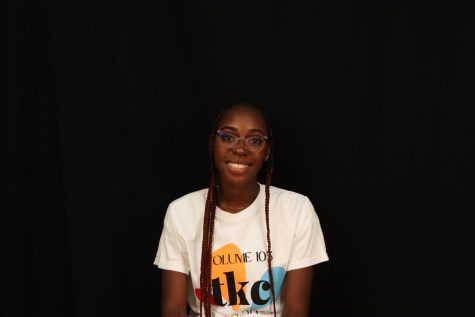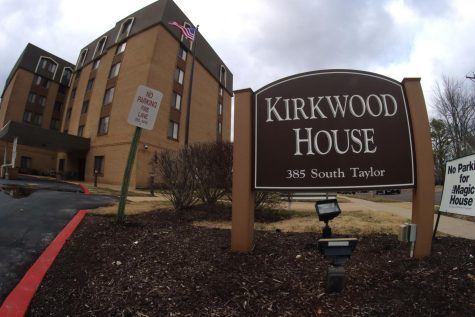The road to diversity
Currently, 11.7% of the kids in KSD are Black, 5.8% are multiracial and 76.3% are white.
Fifty years ago, Minnie Liddell and four other parents of Black St. Louis city school students went to federal court, alleging that their schools were inferior to those in white neighborhoods. This was the beginning of the court case known as Liddell v. Board of Education, and the beginning of an era of St. Louis city bussing.
The Liddell case started small, and was going to be settled in 1975 with a goal of improving the current city public schools. Then the NAACP proposed an addition to the plan: bussing. A third of inner city students would be bussed to suburban schools, and students from the suburbs would be bussed to city schools. The end goal: a desegregated and better-educated St. Louis.
But this transfer program, now called the Voluntary Interdistrict Choice Corporation (VICC), has a time limit that’s about to end. According to the Choice Corporation website, VICC was supposed to discontinue after the 2008-09 school year. Since then the program has been extended three times, and is now scheduled to stop enrolling students in 2024.
According to the KSD Official Enrollment Report from October 2021, KSD housed 259 transfer students in 2013. As of the 2021-22 school year, that number waned to a mere 66 students who attend KSD through VICC. Dr. Mike Havener, KHS principal, said that changes in the program have had a significant impact on diversity in the district.
“[The only way to join KSD through VICC] is to be a sibling of [a current VICC student],” Havener said. “Because of this, our numbers are going down drastically.”
In 2007, 22.9% of students in KSD were Black. Today, that number has gone down by 11.2%. Earl Byrd, sophomore, is able to attend KSD through his sisters, who were previously enrolled through the VICC program and graduated KHS in 2009 and 2015. Byrd said it is unfortunate other kids aren’t going to have the same opportunity as the program phases out, and he’s noticed a lack of diversity within the district.
“In most of my classes, I’m one of the only African-American kids there,” Byrd said. “As an African-American student I have to clique up and find my people because there’s so little of us.”
Currently, only 11.7% of the kids in KSD are Black, 5.8% are multiracial and 76.3% are white. Dr. Jeremy Mapp, KSD’s executive director of diversity, equity and inclusion, was hired by the school board this May. He held the same role at Lindbergh schools from 2021-2022, and was previously the vice principal at Keysor Elementary School for three years. Mapp said because the program is being discontinued, not only KSD but St. Louis as a whole may go backward in terms of diversity.
“[The district] will continue to unfortunately see a decrease in our diversity,” Mapp said. “[This is] simply because we just won’t have new students coming to us in the same way we’ve had historically. The whole point of the program was that students of color were able to come into our schools, and that will no longer be the case.”
Along with VICC, KSD had previously partnered with the Riverview Gardens School District (RGSD) in 2013. Unlike VICC, desegregation was not the reason for the transfer program. Once they lost their accreditation in 2007, RGSD was required to send a portion of their students to an accredited district in 2013 due to the court case Breitenfeld v. Clayton (2013). They chose KSD as their destination district, and for years previous RGSD students have taken a bus from the city to KSD. But in 2022, the last of the students who transferred from RGSD graduated.
“[The Riverview Gardens partnership] is different from VICC, but that was also a piece of where diversity in our student population came from,” Mapp said. “No longer being in [these programs] will mean that [RGSD] students will no longer be in our district, and that will be a direct correlation to diversity.”
With programs like these leaving the KSD toolbox, finding new ways to ensure inclusivity and diversity is important for students like Byrd. Byrd said going to school within a diverse environment helps him feel more comfortable and ready to learn.
“It becomes hard to learn when you feel this need to isolate yourself from other students because they might not look like you or act like you,” Byrd said. “You [think] they might be scared of you, or that you might come off as brash. You don’t want to talk to them because of the way they might perceive you because of your race.”
Mapp said he is supporting KSD principals and equipping them with the tools they need to better promote inclusion in the district. He said their main goal right now is helping to create a sense of belonging and dignity for everyone in KSD, regardless of their differences.
“School is a direct reflection of the world we live in,” Mapp said. “It’s important [students] see the differences that are in each other because those are the differences out in our world.”
Your donation will support the student journalists of Kirkwood High School. Your contribution will allow us to purchase equipment and cover our annual website hosting costs.

She/Her
Hobbies and Interests: reading, sleeping, starting things I never finish
Favorite song: Yoshimi Battles the Pink Robots Pt. 1 by The Flaming...

She/Her
Hobbies and Interests: drawing, playing my ukulele, listening to music, gaming
Favorite song: The Adults are Talking by The Strokes
Favorite...











